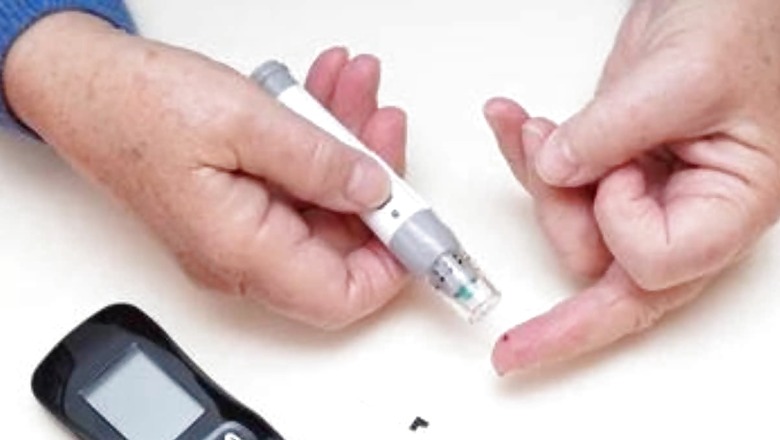
views
Prediabetes is a disorder that affects millions of people worldwide. It occurs when blood sugar levels are greater than normal, but not high enough to be classed as type 2 diabetes. Although prediabetes may not necessarily evolve into full-blown diabetes, it is still a cause of concern because it raises the possibility of getting type 2 diabetes as well as other health issues like heart disease, renal disease, and stroke.
The good news is that the medical condition is reversible with the right lifestyle changes such as eating a healthy diet, engaging in regular physical activity, and maintaining a healthy weight. So, if you have been diagnosed with prediabetes, here’s all the information you need to know about it, including its symptoms, causes, risk factors, and treatment options, so that you can take control of your health and prevent the onset of type 2 diabetes.
What causes Prediabetes?
Pancreas produces a hormone called insulin, which serves as the “key” to enable cells to use blood sugar as a source of energy. In prediabetes, cells in your body do not respond properly to insulin. To compensate, the pancreas produces more insulin to try to prompt cells to respond. This extra effort becomes unsustainable, leading to a rise in blood sugar levels and paving the way for prediabetes; and, in the future, type 2 diabetes.
When fasting, a healthy individual’s blood glucose level should not exceed 99 mg/dL. Hypoglycemia occurs when the blood glucose level drops below 70 mg/dL. In prediabetes, the blood glucose level increases to 100 to 125 mg/dL. If the blood glucose level surpasses 125 mg/dL, the individual will be diagnosed with diabetes.
Prediabetes risk factors
Although prediabetes can affect anyone, the likelihood of developing this condition can be heightened by certain factors.
- Being overweight or obeseCarrying excess weight, particularly around the waistline, increases the risk of developing prediabetes.
- Sedentary lifestyle Lack of physical activity and spending long periods sitting or lying down can increase the risk of developing prediabetes.
- Family history of type 2 diabetesIf you have a parent or sibling with type 2 diabetes, your risk of developing prediabetes is higher.
- AgeThe risk of developing prediabetes increases with age, particularly after age 45.
- Gestational diabetesWomen who had gestational diabetes during pregnancy are at increased risk of developing prediabetes.
- Polycystic ovary syndrome (PCOS)Women with PCOS, a hormonal disorder that affects the ovaries, are at increased risk of developing prediabetes.
Preventing type 2 diabetes
- Maintain a healthy weightObesity or being overweight raises the possibility of getting type 2 diabetes. Losing even a small amount of weight can have a significant impact on reducing this risk.
- Engage in regular physical activityRegular exercise can help improve insulin sensitivity and lower blood sugar levels, reducing the risk of developing type 2 diabetes.
- Eat a healthy dietA diet rich in whole grains, fruits, vegetables, lean proteins, and healthy fats can help reduce the risk of developing type 2 diabetes.
- Limit consumption of sugar and refined carbohydratesConsuming too much sugar and refined carbohydrates can lead to elevated blood sugar levels and increase the risk of developing type 2 diabetes.
- Quit smokingSmoking increases the risk of developing type 2 diabetes, as well as a host of other health problems.
- Manage stressStress can lead to elevated blood sugar levels, so it’s important to develop healthy coping mechanisms to manage stress levels.
- Get regular check-upsGetting regular check-ups and screenings can help identify prediabetes or type 2 diabetes early, allowing for prompt treatment.
Prediabetes treatment
The primary approach for managing prediabetes is the same as the preventive measures for type 2 diabetes. This includes engaging in regular physical activity, following a healthy diet, and losing weight, as these actions can help regulate blood sugar levels and prevent them from rising further. In some instances, these lifestyle modifications may lead to a decrease in blood sugar levels, and there is a possibility of reversing prediabetes through these changes.
If you have prediabetes, it is important to work with your healthcare provider to develop a plan to manage your condition and reduce your risk of developing type 2 diabetes and other health problems.
Read all the Latest Lifestyle News here



















Comments
0 comment